بسم الله الرحمن الرحيم
هذا تقرير معهد إستكهولوم الدولى الخاص بسوق المقاتلات الحربيه
وهو تقرير رائع بالفعل يحتوى على معلومات عن هذه السوق
من عام 2000 إلى عام 2004
ومن عام 2005 إلى عام 2009
وبمعلومات مفصله
ويوجد بالتقرير جداول لتوضيح الصفقات وأعدادها والدول المنتجه والمصدره والمستورده
وسأقوم بعرض التقرير بلغته الأصليه
ثم سأقوم بترجمته كاملاآ ترجمه حرفيه
مع إضافة صور للمقاتلات وفيديوهات إن أمكن
وبعض المعلومات لشرح نقطه معينه
ثم بعد ذلك سأقوم بمناقشة المعلومات الوارده بالتقرير مع الأخوه الأعضاء
وهذا الموضوع خاص بالمنتدى العربى للدفاع والتسلح
ولن تجدوه مترجمآ فى أى موقع عربى اخر
لأن هذا التقرير من ترجمتى الخاصه وإعدادى
وقمت بوضع حقوق المنتدى العربى للدفاع والتسلح على الجداول الوارده فى الموضوع
OF COMBAT AIRCRAFT, INTERNATIONAL TRANSFERS
2005–2009
siemon t. wezeman
Combat aircraft dominate international arms transfers. They accounted
for 27 per cent of the volume of transfers of major weapons over the period
2005–2009. This dominant position is even more apparent if all the weapons
and components that are transferred for use with combat aircraft—missiles,
bombs, sensors and engines—are taken into account. Together, combat air-
craft and related weapons and components accounted for around 33 per cent
of the volume of transfers (see figure 1 and box 1; see also box 2 below for an
explanation of SIPRI estimates of volumes).
The fact that combat aircraft form such a large segment of transfers of
major weapons is neither surprising nor dramatically new. However, with
their potential for sudden and long-range attacks, combat aircraft are among
the weapons with the greatest potential to cause instability. They are also
expensive to acquire and to operate and thus place a heavy burden on mili-
tary budgets. For these two reasons, transfers of combat aircraft have been
and remain a matter of great importance and concern.
THE SUPPLIERS OF COMBAT AIRCRAFT
Only 11 countries currently produce combat aircraft: China, France, India,
Japan, Russia, Sweden and the United States each produce locally designed
aircraft, while Germany, Italy, Spain and the United Kingdom have formed
a consortium for the production of the Eurofighter Typhoon (see table 1). A
number of other countries also supply second-hand aircraft (see table 2).
Russia and the USA are by far the two largest suppliers of combat aircraft
(and, indeed, of all major conventional weapons): combat aircraft accounted
for about two-fifths of the volume of their total deliveries of major weapons
in the period 2005–2009 (see table 3). Exports represent a substantial por-
tion of these two countries’ total production of combat aircraft and both the
USA and Russia have received a constant stream of small and large foreign
orders for combat aircraft in the past five years. The USA exported 331 new
F-16C, F/A-18E and F-15E aircraft and produced a similar number of F/A-18E
and F-22 aircraft for its own forces over the five years 2005–2009. Russia’s
exports of 215 Su-25, Su-27, Su-30 and MiG-29 aircraft outnumbered the
aircraft produced for its own use by more than 10 to 1. Based on known
orders, this pattern will probably not change for the USA, while for Russia
the proportion of aircraft produced for national use is likely to increase.
The pattern of exports of the smaller exporters of combat aircraft—China,
France, Germany, Sweden and the UK—is uneven (see table 2). Production
by these countries is often exclusively for national use as foreign orders are
received infrequently. The other producers of combat aircraft—India, Italy,
Japan and Spain—receive orders (for both export and national use) infre-
quently and their ratios of production for export versus national use vary.
In the period 2005–2009 some of these producers only produced for export,
while others produced only for the national market.
China has exported about 41 F-7 and JF-17 aircraft but has produced
substantially more J-10, JH-7 and other combat aircraft for national use.
While it has a substantial order for the JF-17 from Pakistan (reported as
50–150 units), there is no great prospect of large orders from other countries
and production of the J-10 and other combat aircraft for national use will
continue to outnumber exports.
Similarly, in 2005–2009 the producers of the Typhoon—Italy, Germany,
Spain and the UK—made approximately 150 aircraft for national use and
only 24 for export (15 from Germany and 9 from the UK). While Italy, Ger-
many and Spain have no outstanding export orders, the UK as an individual
Typhoon producer has about as many orders for export (c. 63 aircraft for
Saudi Arabia) as for national use.
France, which had had outstanding orders for newly produced combat
aircraft in every year since 1961, has had no deliveries outstanding since
2008. While France has historically produced more combat aircraft for
export than national use, it exported only 17 newly produced Mirage-2000
aircraft in 2005–2009 compared with approximately 65 Rafales produced
for national use. Despite aggressive marketing, it has not yet sold the Rafale
abroad.
Sweden has produced a total of about 60 JAS-39 aircraft, of which 37 were
exported in 2005–2009. It has no outstanding orders for national use and
25–31 are to be delivered to foreign buyers in the coming years.
Italy and Spain have not exported newly produced combat aircraft in
recent years. India has never exported combat aircraft, while Japan does not
ofer combat aircraft (or other weapons) for export.
In addition to transfers of newly produced aircraft, second-hand combat
aircraft have been transferred by both the original manufacturing countries
and by other users. Second-hand aircraft accounted for 26 per cent of the
number of combat aircraft transferred in 2005–2009 (see table 2). Ukraine,
with a huge inventory of surplus Soviet-era aircraft, delivered the highest
number of such second-hand aircraf t in this period—68 aircraf t, representing
27 per cent of the total number of second-hand aircraft transferred. After the
USA, the original producer and lar gest user of F-16 aircraft, Belgium and the
Nether lands were the largest exporters of F-16s; these states both sold aircraft
that have become surplus due to reductions in the size of their armed forces.
For arms-producing countries, sales of combat
For arms-producing countries, sales of combat
aircraft form a significant proportion of their arms
exports (see figure 2) and are often the highest-
valued arms exports. While all pro ducers developed
and continue to develop their combat aircraft for
national use, they also see exports as almost a
necessity in order to recoup some of the extremely
high development costs. Govern ments of producer
countries therefore often do their utmost to win
orders for combat aircraft. This includes repeated
visits by high-ranking govern ment oicials, includ-
ing presidents and prime ministers, extensive ofset
arrangements, credits, technology transfers to
local industries and fast deliveries from production
originally earmarked for use by the exporter’s own
armed forces.
Because of the high values of combat aircraft
programmes, it is not surprising that companies
producing such aircraft or major components or
weapons for them are consistently among the lar-
gest arms-producing companies in the world. In
2007 and 2008, the three companies at the top of
the SIPRI Top 100 arms-producing companies
pro duced combat aircraft (among other weapons).
Indeed, in both years, the 10 largest arms-producing
companies either made combat aircraft or major
components or weapons for them.
THE RECIPIENTS OF COMBAT AIRCRAFT
For most of the 10 largest importers of major weap-
ons in the period 2005–2009, combat aircraft made
up a substantial proportion of their arms imports
(see figure 3).
Over the period 2005–2009, 44 countries
imported combat aircraft (see table 4). India, the
United Arab Emirates (UAE) and Israel were by far
the largest recipients of combat aircraft. Together,
these three countries—which each lies in a region
of serious inter national tensions—accounted for
almost one-third of all transfers of combat aircraft. For all three, combat
aircraft made up far over half of the total volume of major arms imports for
2005–2009.
THE IMPACT ON STABILITY
Combat aircraft have the potential to be among the most destabil izing of
weapons. While they are important as a defensive weapon, the possession
of combat aircraft often also gives the capability to strike fast and far into
neighbouring countries, as exemplified by the Israeli air attack on Syria
in September 2007 and Russian attacks on Georgia in August 2008. This
capabil ity increases significantly when the aircraft are supported by tanker
air craft and when they are equipped with advanced electronic warfare
systems and large numbers of short- and long-range stand-of precision
weapons. Such weapons and systems have become the norm in recent years.
Because of their destabilizing potential, combat aircraft are specifically
included among the weapons covered by the 1990 Treaty on Conventional
Armed Forces in Europe (CFE Treaty). The European states that are party
to the CFE Treaty must respect limits on their holdings of combat aircraft
(as well as armoured vehicles, artillery, attack helicopters and tanks). In add-
ition, all United Nations member states are expected to annually report their
imports and exports of combat aircraft to the UN Register of Conventional
Arms (UNROCA). UNROCA was established in 1991 to prevent the destabil-
izing build-up of arms. It includes seven categories of weapons considered
potentially most destabilizing: armoured vehicles, artillery, attack heli-
copters, combat aircraft, missiles and missile launchers, tanks, and warships.
Seven of the eight states with nuclear weapons include combat aircraft
among the systems for delivering these weapons (only the UK has aban-
doned aircraft as a means of delivery). Both India and Israel, two of the
largest importers of combat aircraft, are known or believed to have assigned
nuclear tasks to combat aircraft imported in recent years. However, while
the transfer of ballistic and cruise missiles and their technology has been
high on the arms control and export control agendas in part because of their
capability to carry nuclear and other mass destruction weapons, the transfer
of advanced combat aircraft and air-to-ground missiles capable of carry ing
nuclear warheads is not.
THE ECONOMIC IMPACT
Combat aircraft are expensive pieces of military hardware: the more
advanced aircraft cost over $40 million each and often substantially more
(see box 2 and table 5). Acquisition programmes for combat aircraft are the
most expensive military hardware programmes for many countries.
The cost of the acquisition programmes is further heightened because other
high-value contracts—for armaments, training, spare parts, maintenance
and technical support, or infrastructure—are often signed simultaneously
In addition, operating costs are high and significant costs result from major
upgrade programmes (e.g. mid-
life upgrades) that many combat
aircraft undergo after having
been in service for 15–20 years
(see table 6 for examples).
Because of their high costs,
combat aircraft can weigh heavily
on military budgets. Even for rich
countries, the acquisition of such
expensive systems may shape the
direction of defence policy and
doctrine for many years—once
bought, countries are unlikely to
dispose of such high-value assets
quickly.
THE SIPRI ARMS TRANSFERS DATABASE
The data included in this fact sheet is taken from the SIPRI Arms Transfers Database.
The database contains information on all transfers of major conventional weapons from
1950 to 2009.
SIPRI data on transfers of major weapons are based on actual deliveries of major
conventional weapons defined by SIPRI as: aircraft, armoured vehicles, ships over
100 tonnes, guided weapons, larger radars and other sensors, artillery over 100-mm
calibre, missile and gun air-defence systems, and engines and turrets for selected larger
platforms.
The infomation in the database is collected from a wide variety of sources: news-
papers and other periodicals; annual reference books; monographs; oicial national
and international documents; information from industry; and blogs and other Internet
publi cations. The common criterion for all these sources is that they are open, that is,
published and available to the public.
The SIPRI Arms Transfers Database is available online at <http://www.sipri.org/
databases/armstransfers/>.
OTHER SIPRI SOURCES OF INFORMATION ON COMBAT AIRCRAFT
The SIPRI Top 100 arms-producing companies
Information on the 100 largest arms-companies worldwide (excluding China) is pub-
lished each year in the SIPRI Yearbook. The most recent list, for 2008, is available at
<http://www.sipri.org/research/armaments/production/Top100/> and is discussed in
Jackson, S. T., ‘Arms production’, SIPRI Yearbook 2010: Armaments, Dis armament and
International Security (Oxford University Press: Oxford, 2010).
World nuclear forces
Information on the use of combat aircraft in the delivery of nuclear weapons appears in
each edition of the SIPRI Yearbook. For the most recent information, see
Kile, S. N. et al., ‘World nuclear forces’, SIPRI Yearbook 2010: Armaments, Disarmament
and International Security (Oxford University Press: Oxford, 2010).
ABOUT THE AUTHOR
Siemon T. Wezeman (the Netherlands) is a Senior Fellow with the SIPRI Arms
Transfers Programme, where he has worked since 1992. Among his publications are
several relating to international transparency in arms transfers, The Future of the United
Nations Register of Conventional Arms, SIPRI Policy Paper no. 4 (August 2003), and
Cluster Weapons: Necessity or Convenience? (Pax Christi Netherlands, 2005, co-author).
He has contributed to the SIPRI Yearbook since 1993.
نلاحظ فى هذا الجدول
وهو خاص بالدول المصدره للمقاتلات ويوضح انواع المقاتلات المصدره
أمام mig29
مكتوب
فى الواقع تحتوى على اجزاء وقطع من المقاتلات المخزنه لدى روسيا
ولم يتم إدراج f35 و pak fa للأن الأولى فى مرحلة التجارب النهائيه
والأخيره فى المرحله الأولى من التجارب
وهناك دول تنتج طرزات معينه مخصصه للتصدير فقط ولا تستخدم فى سلاحها الجوى
مثل الصين
التى صدرت نحو 41 مقاتله
f7

ومقاتلات لباكستان من طراز
jf17

وتنتج طائرات أكثر منها تطورآ للإستخدام الوطنى مثل
j10
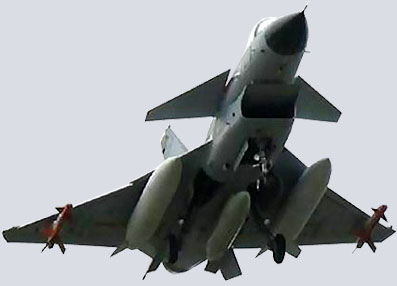
jh7
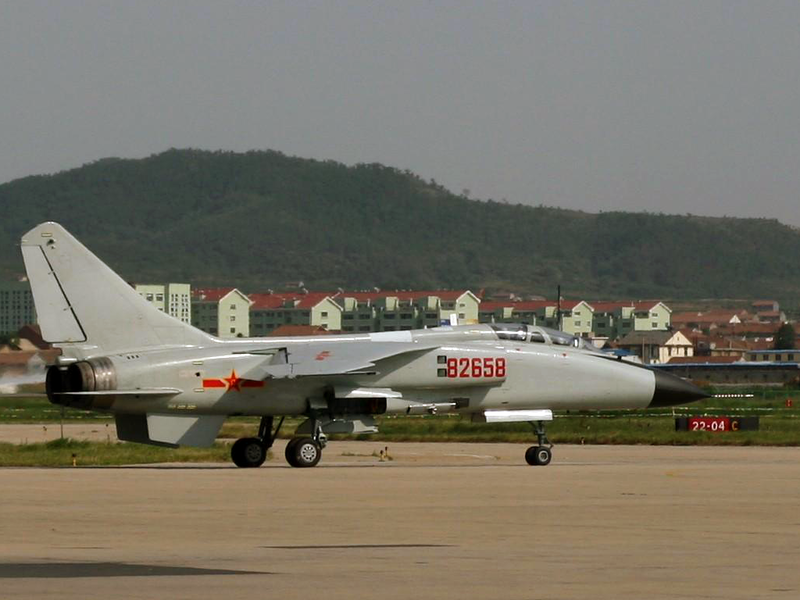
وقد تلقت الصين طلبات تصدير من 50 إلى 150 مقاتله jf17 لباكستان ولا يوجد إحتمال وجود طلبات تصدير لهذه المقاتله قريبآ
وسوف تطرح j10 للتصدير بعد إكتفاء القوات الجويه الصينيه منها
جدول يوضح سوق تصدير المقاتلات
والمقاتلات المستعمله

نلاحظ فى هذا الجدول
أن
الصين
قامت بتصدير 117 مقاتله خلال التسعة سنوات الماضيه
فى حين ان
فرنسا
قامت بتصدير 97 مقاتله
ألمانيا
صدرت 15 مقاتله تايفون جديده للنمسا
إسرائيل
قامت بتصدير 23 مقاتله مستعمله
وهى الكفيير7 لدول أمريكا الجنوبيه
روسيا
صدرت 502 مقاتله جديده
و48 مقاتله مستعمله
تم توضيحهم فى الأعلى
السويد
صدرت 37 مقاتله جريبين
العميل الأساسى جنوب إفريقيا
و تؤجر مقاتلات للتشيك والمجر
واخر عميل تايلاندا
أوكرانيا
صدرت 98 مقاتله مستعمله
ومعظمها لدول فى أفريقيا
بريطانيا
صدرت 51 مقاتله جديده لا يوجد أى صادرات لمقاتلات مستعمله
الولايات المتحده
صدرت 546 مقاتله جديده
و81 مقاتله مستعمله
وهى الأكثر عددآ والأغلى سعرآ

وقد انتجت الدول المجتمعه فى تصنيع مقاتلة اليورفايتر 150 مقاتله من هذا النوع فى الفتره من 2005 إلى 2009
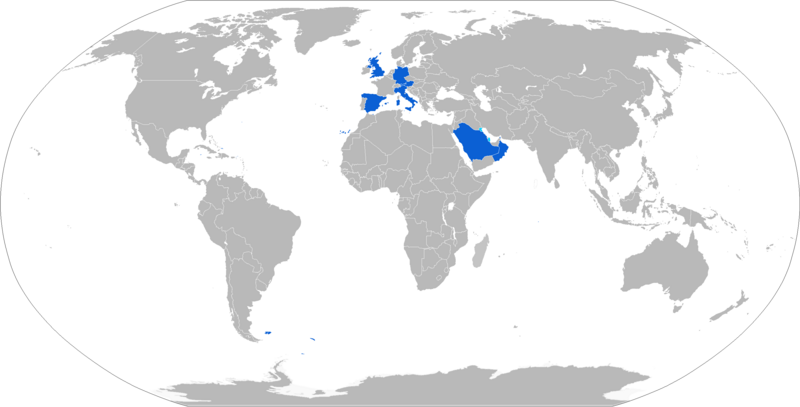
وإستلمت طلبات للتصدير تقدر ب24 مقاتله
15 مقاتله من ألمانيا قامت بتصديرها إلى النمسا
و9 مقاتلات من المملكه المتحده قامت بتصديرها إلى السعوديه
ولم تتلقا
ألمانيا
وإيطاليا
وأسبانيا
طلبات أخرى
فى حين تلقت المملكه المتحده طلب بتصدير 63 مقاتله اخرى إلى السعوديه

فرنسا
التى تتلقا طلبات لتصدير المقاتلات سنويآ منذ عام 1961
لم تتلقا طلبات منذ عام 2008
فرنسا التى لها صادارت ذات تاريخ عريق فى سوق المقاتلات لم تستطع تصدير سوى 17 مقاتله فقط فى الفتره من 2005 إلى 2009 من طراز ميراج 2000

فى حين أنتجت 65 مقاتله للإستخدام الوطنى من طراز
rafal

التى لم تتلقا أى طلبات للتصدير الخارجى بعد
السويد
قامت بإنتاج 60مقاتله من طراز جريبين
jas39
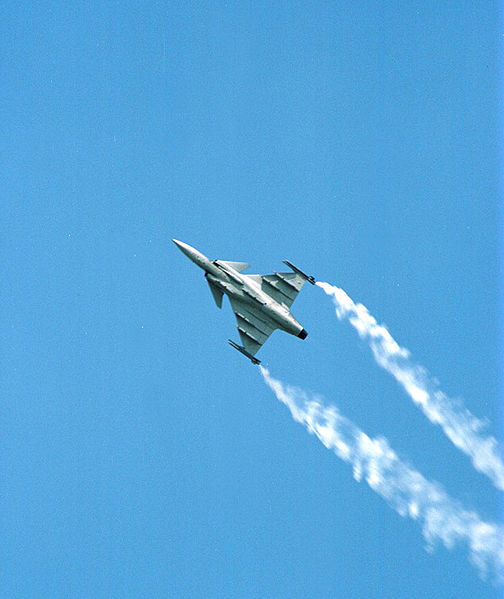
قامت بتصدير 37 مقاتله منهم
ومن المقرر أن تسلم من 25 إلى 31 مقاتله للعملاء خلال السنوات القادمه
أسبانيا
إيطاليا
الهند
لم تصدر مقاتلات فى هذه الفتره
فى حين ان اليابان التى لم تصدر مقاتلات
لديها سياسه تمنع تصدير الأسلحه عمومآ
Mitsubishi F-2

بالإضافه إلى المقاتلات الجديده هناك سوق أخرى للمقاتلات المستعمله
وأشهر الدول فى هذه السوق هى اوكرانيا التى تستأثر ب26% من هذه السوق
بسبب وجود عدد كبير من المقاتلات لديها من الحقبه السوفيتيه
ويأتى بعدها
الولايات المتحده
بلجيكا
هولندا
بمقاتلات f16 المستعمله
وتقوم الدول المنتجه بتطوير إنتاجها من المقاتلات وترويجها للعملاء
واحيانآ يقوم روساء الدول او روساء الوزراء بزيارة الدول التى تريد شراء المقاتلات
للترويج لمنتجاتهم الوطنيه ويقومون بعرض صفقات اوفست لتشجيع هذه الدول
فلا شك ان تعتبر الشركات المصدره للمقاتلات من اكبر شركات الأسلحه فى العالم

نلاحظ أهم ما فى هذا الجدول هو الدول المصدره للصواريخ التى تحملها المقاتلات
فرنسا
Matra Super 530

MICA (missile)

إسرائيل
Python (missile)

Derby

روسيا
مختلف انواع الصواريخ التى تحملها الطائرات
وأشهرها عائلة الأر
R-77 (missile)

أوكرانيا
عائلة الأر
R-73 (missile)

بريطانيا
صواريخ إسكاى فلاش وإسرام وأنواع أخرى
AIM-132 ASRAAM
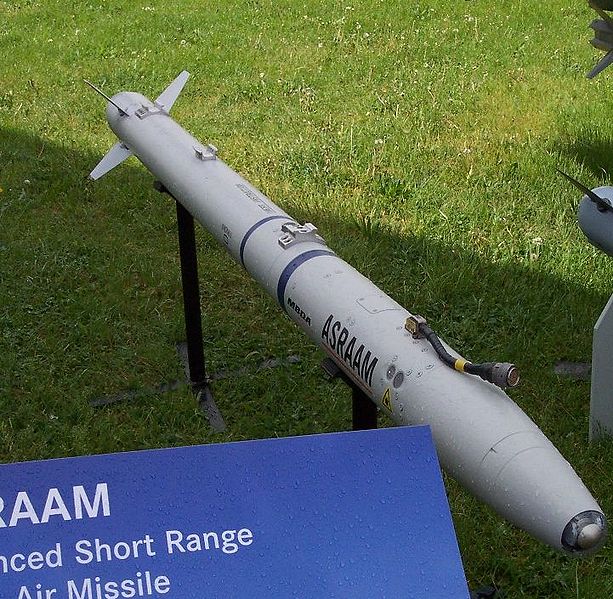
Skyflash

الولايات المتحده
مختلف انواع الصواريخ التى تحملها المقاتلات وأشهرها
AIM-120 AMRAAM
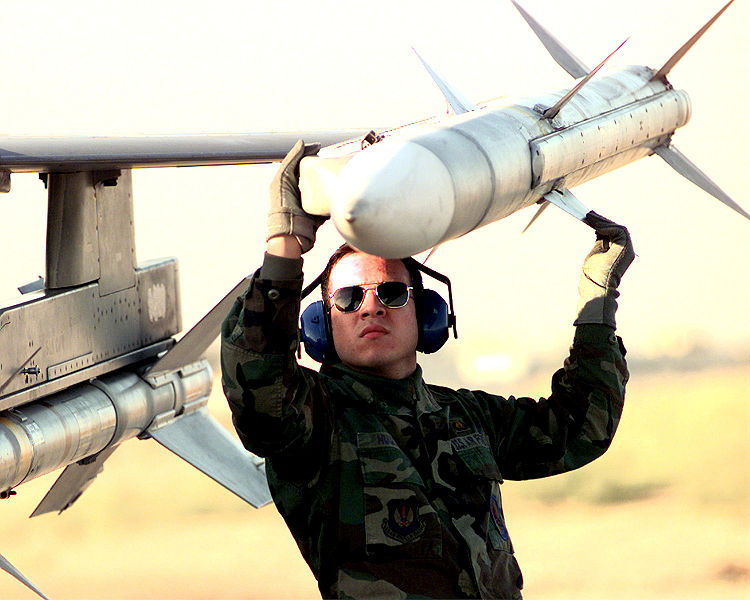
وهذه هى
هى اكثر الدول المصدره للصواريخ الخاصه بالمقاتلات
و أوكرانيا هى التى عقدت اكثر عدد من الصفقات
فهى تنتج عائلة الأر
والصاروخ الأكثر تصديرآ لها هو r73
والصين
عقدت صفقات قليله اهمها
صواريخ sd10 إلى باكستان

وألمانيا
صواريخ
IRIS-T
إلى السعوديه واليونان
IRIS-T


أكثر الدول المستورده للمقاتلات
وفى عام 2007 2008
تواجد 3شركات من الشركات المنتجه للمقاتلات فى قائمة أكبر 100 شركه عالميه اتصدير السلاح
وبالنسبه لأكبر 10 دول مستورده للسلاح
تعتبر واردتها من المقاتلات هى الأعلى بالمقارنه مع الأسلحه الأخرى فى الفتره من 2005 إلى 2009
فى الفتره من 2005 إفى 2009 هناك 44 دوله قامت بإستيراد المقاتلات واكبر هذه الدول هى
الهند

الإمارات العربيه المتحده

إسرائيل
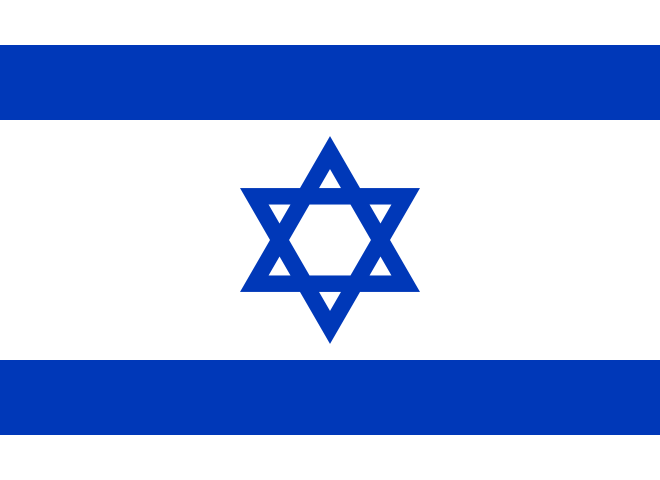
وهذه الدول تتواجد فى مناطق خطيره من حيث التواترت بين الدول المجاوره
وإستوردت هذه الدول ثلث عدد الطائرات المصدره فى الفتره من عام 2005 إلى 2009


نلاحظ فى هذا الجدول
الدول الأكثر شراء
الهند
إشترت 115 مقاتله جديده
الإمارات
إشترت 108 مقاتله جديده
إسرائيل
إشترت 82 مقاتله جديده
وهناك عدد من الدول العربيه قامت بشراء مقاتلات جديده ومستعمله
الجزائر
إشترت 32 مقاتله منهم 4 مقاتلات مستعمله
الإردن
إشترى 36 مقاتله مستعمله
سوريا
إشترت 33 مقاتله مستعمله
اليمن
إشترى 33 مقاتله مستعمله و4 مقاتلات جديده
أثر المقاتلات عل حالة الإستقرار العالمى
المقاتلات من اكثر الأسلحه القادره على توجيه ضربات مؤلمه
وهى سلاح مهم يقوم بضربات فى اماكن بعيده وبسرعه رهيبه
فى الدول المجاوره مثل
الهجوم الإسرائيلى على سوريا فى عام 2007

والهجوم الروسى على جورجيا فى 2008



وزادت قدرات المقاتلات بشكل ملحوظ عندما تم دعمها بطائرات الأواكس
وزيادة قدراتها فى الحرب الإلكترونيه




وأيضآ قدرتها على حمل أسلحه قصيرة المدى وبعيدة المدى تتيح لها توجيه ضربات شديدة الدقه
Taurus

AGM-65 Maverick
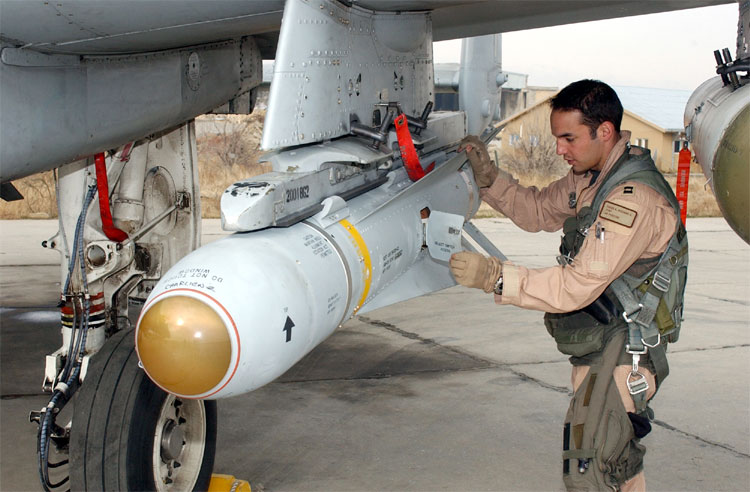
Storm Shadow

وبتلك المواصفات تستطيع المقاتلات زعزعة الإستقرار
وقد ادرجت المقاتلات فى معاهدة الحد من الأسلحه التقليديه فى اوروبا عام 1990
التى تفرض قيود على إمتلاك المقاتلات وكذلك
العربات المدرعه والمدفعيه والهليكوبتر الهجوميه والدبابات
ومن المتوقع ان تقوم كل الدول التابعه للأمم المتحده بتقديم تقارير إلى سجل الامم المتحده بالواردات والصادارات من المقاتلات
من خلال معاهدة UNROCA)
التى تم عقدها لمنع تراكم مخزون الأسلحه لدى الدول
وتشمل سبعة فئات من الأسلحه التى تزعزع الإستقرار
العربات المدرعه والمدفعيه والهليكوبتر الهجوميه والدبابات والمقاتلات والسفن الحربيه والصواريخ وقواذف الصواريخ
سبعه من الثمانى دول المالكه للأسلحه النوويه تستخدم المقاتلات فى حمل تلك الأسلحه
المملكه المتحده هى الدوله النوويه الوحيده التى لا تستخدم المقاتلات فى حمل تلك الأسلحه
الهند وإسرائيل يعتقد إنهم يستخدمون المقاتلات فى حمل تلك الأسلحه
بجانب إنهم من أكثر الدول إستيردآ للمقاتلات
وتستخدم المقاتلات المستورده فى ذلك

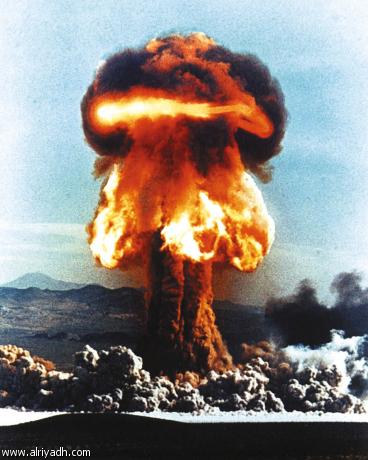
مع ذلك تم عقد إتفاقية الحد من تصدير الصواريخ الباليستيه وصواريخ كروز للحد من إستخدام تلك الأسلحه فى حمل الأسلحه النوويه
الأثار الإقتصاديه
المقاتلات هى من أكثر القطع العسكريه تكلفه فقد تكلف المقاتله الواحده 40 مليون دولار واكثر من ذلك فى معظم الأحيان
فى الواقع 40 مليون دولار
يمكن بهم شراء
مقاتله من طراز j10 الصينيه بتسليحها
فى حين إن
المقاتله mig29 بيعت لبورما بمبلغ 30 مليون دولار تقريبآ بدون التسليح
وتقترب من 40 مليون دولار كاملة التسليح
وأقل مقاتله فى السعر موجوده حاليآ
هى jf17
الصينيه الباكستانيه يتراواح سعرها بين 15 إلى 20 مليون دولار
ثم تأتى التيجاس الهنديه
ذات تكلفة 20 مليون دولار
السوخوى30 بيعت للجزائر بمبلغ 60 مليون دولار
f16 block52 الجديده التى تعاقدت عليها مصر يقترب سعرها من ال70 مليون دولار
المقاتله اليابانيه f2 تكلفتها 80 مليون دولار
f18 بيعت للقوات الجويه الأمريكيه بمبلغ 80 مليون دولار
f15 بيعت لكوريا الجنوبيه بمبلغ 105 مليون دولار
السعوديه تعاقدت على التايفون بمبلغ 120 مليون دولار
f16 block60 الإماراتيه بمبلغ 80 مليون دولار
السوخوى 35 تعاقدت عليها ليبيا بمبلغ يقترب من 70 مليون دولار
وستباع للجيش الروسى بمبلغ 40 مليون دولار
الجريبين بيعت لجنوب إفريقيا وتايلاند بمبلغ 52.5 مليون دولار
f35 تعاقدت عليها إسرائيل بمبلغ 96 مليون دولار
فى حين إنها تعرض على كندا والسوق العالميه بمبلغ يبدء من 130 مليون دولار
الباك فا التى تعاقدت عليها الهند مع روسيا تكلفة المقاتله الواحده 100 مليون دولار
فى حين إن أغلى مقاتله هى f22 التى يقدر ثمنها ب285 مليون دولار
الرافال الفرنسيه
لم يتعاقد عليها احد بعد
فى حين إن الطراز الحالى بيع للقوات الجويه الفرنسيه بمبلغ يتراوح ما بين 60 إلى 70 مليون دولار
وهناك من يقول إنها تعرض بطرازها المحدث على الإمارات بمبلغ 130 مليون دولار
المقاتله جيده لكنى أرى إن سعرها هكذا إن صحت الأقوال مبالغ فيه جدآ
فالأفضل للإمارات أن تنتظر الباك فا بعد 2016
وفى الواقع المقاتله الواحده قد تباع لدوله بثمن و تباع لدوله أخرى بثمن أخر
وهذا يكون بالسبب التجهيزات الخاصه بالمقاتله
فهذا بلد يطلب مواصفات وهذا بلد اخر يطلب مواصفات اخرى
هناك بلدان ليست لديها ميزانيات كبيره تشترى المقاتلات على دفعات تقدر بأربعة مقاتلات
كإندونيسيا وتايلاند
ولا تطلب معها كميات سلاح كبيره ولا قطع غيار
فى حين ان هناك بلدان اخرى كالسعوديه والإمارات
تشترى صفقات كبيره من 60 إلى 72 مقاتله
وتشمل الصفقه كميه كبيره من الأسلحه وقطع الغيار ومصاريف صيانه ودعم فنى وتدريب
وتأهيل قواعد فيكون سعر الصفقه كبير
وبرامج إقتناء المقاتلات
هى أكثر برامج الأسلحه تكلفه للدول التى تعد هذه البرامج
ومما يزيد تكلفة المقاتلات
هى البرامج التدريبيه والدعم الفنى وقطع الغيار والصيانه والبنيه التحتيه الخاصه بالمقاتلات
التى قد يوقع عليه مع صفقة المقاتلات أو تكون منفصله
بالإضافه إلى مصاريف التشغيل المرتفعه
وبرامج الترقيه على سبيل المثال برامج ترقية نصف العمر
العديد من المقاتلات تخضع لهذه الترقيه لتمديد عمرها من 15 إلى 20 عام
بسبب إرتفاع تكاليف المقاتلات يمكن لها أن تثقل ميزانيات الدول ومنها الدول الغنيه أيضآ
وإقتناء المقاتلات يحدد السياسه الدفاعيه للدوله لفترات بعيده
فالمقاتلات ليست أسلحه تدخل الإستخدام وتخرج بعد سنوات قليله إنما تستمر فترات بعيده نسبيآ

هذا الجدول يوضح تكلفة بعض صفقات المقاتلات وإختلافها من دوله إلى أخرى
نجد إن المغرب تعاقد على 24 مقاتله f16 بمبلغ 2.4 مليار دولار
وتركيا تعاقدت على 30 مقاتله من نفس النوع بمبلغ 1.8 مليار دولار
أى عدد مقاتلات اكثر وبسعر أقل
هذا يرجع إلى ان المغرب
ليس لديه بنيه تحتيه مجهزه لهذه المقاتلات فالصفقه تشمل بناء قاعده لهذه المقاتلات
فى حين ان تركيا تشغل ثالث أكبر أسطول من الأف16 بعد امريكا وإسرائيل وتقوم بتجميع المقاتلات محليآ
فلا تحتاج إلى بنيه تحتيه
وتوفر اموال بسبب التجميع محليآ ومسائل الصيانه والدعم الفنى وهكذا تسير الأمور

هذا الجدول يوضح صفقات تحديث المقاتلات
ونجد فيه التالى
إسرائيل
تحدث مقاتلات كفيير لكلومبيا فى صفقه ب160 مليون دولار
الهند
عقدت صفقتين مع فرنسا لتحديث الميراج
ومع روسيا لتحديث الميج29
باكستان
عقدت صفقه مع امريكا تقترب من ال900 مليون دولار لتحديث 32 مقاتله أف16 للبلوك 50
البيرو
صفقه مع روسيا لتحديث 8 مقاتلات ميج29
السعوديه
عقدت صفقه مع بريطانيا لتحديث 82 مقاتله تورنيدو إلى الطراز gr-4s f بمبلغ مليار دولار
وعقدت صفقه مع أمريكا لشراء محركات جديده ل70 مقاتله f15 s
تركيا
عقدت صفقه مع الولايات المتحده لتحديث 80 مقاتله f16 بتكلفة مليار ومائة مليون دولار
قاعدة بيانات المعهد لتجارة الأسلحه
جميع هذه البيانات مأخوذه من قاعدة بيانات معهد إستكهولم لتجارة السلاح والمعهد يمتلك قاعدة بيانات لجميع صفقات السلاح منذ عام 1950 إلى عام 2009
وتستند بيانات المعهد على التسليم الفعلى لصفقات السلاح
والأسلحه التقليديه التى يراقبها المعهد عباره عن
المدرعات والطائرات والسفن التى يصل حجمها أكثر من 100 طن
والأسلحه الموجهه وأجهزة الرادار وأجهزة الإستشعار عن بعد
والمدفعيه ذات عيار أكثر من 100ملم
وصواريخ ومدفعية الدفاع الجوى والمحركات
ويتم جمع بيانات المعهد من المصادر المعتمده لصفقات تصدير السلاح ومن الصحف والدوريات الخاصه بالسلاح
والكتب المرجعيه السنويه والدراسات الدوليه والوثائق الوطنيه
ومعلومات التصنيع ومواقع الإنترنت
وموقع قاعدة البيانات الخاصه بالمعهد متاح للجمهور
http://www.sipri.org/
ويوجد معلومات عن أكبر 100 شركه فى صناعة السلاح
بإستثناء الصين
واحدث قائمه لعام 2008 متاحه للجمهور
http://www.sipri.org/research/armame...uction/Top100
هذا تقرير معهد إستكهولوم الدولى الخاص بسوق المقاتلات الحربيه
وهو تقرير رائع بالفعل يحتوى على معلومات عن هذه السوق
من عام 2000 إلى عام 2004
ومن عام 2005 إلى عام 2009
وبمعلومات مفصله
ويوجد بالتقرير جداول لتوضيح الصفقات وأعدادها والدول المنتجه والمصدره والمستورده
وسأقوم بعرض التقرير بلغته الأصليه
ثم سأقوم بترجمته كاملاآ ترجمه حرفيه
مع إضافة صور للمقاتلات وفيديوهات إن أمكن
وبعض المعلومات لشرح نقطه معينه
ثم بعد ذلك سأقوم بمناقشة المعلومات الوارده بالتقرير مع الأخوه الأعضاء
وهذا الموضوع خاص بالمنتدى العربى للدفاع والتسلح
ولن تجدوه مترجمآ فى أى موقع عربى اخر
لأن هذا التقرير من ترجمتى الخاصه وإعدادى
وقمت بوضع حقوق المنتدى العربى للدفاع والتسلح على الجداول الوارده فى الموضوع
OF COMBAT AIRCRAFT, INTERNATIONAL TRANSFERS
2005–2009
siemon t. wezeman
Combat aircraft dominate international arms transfers. They accounted
for 27 per cent of the volume of transfers of major weapons over the period
2005–2009. This dominant position is even more apparent if all the weapons
and components that are transferred for use with combat aircraft—missiles,
bombs, sensors and engines—are taken into account. Together, combat air-
craft and related weapons and components accounted for around 33 per cent
of the volume of transfers (see figure 1 and box 1; see also box 2 below for an
explanation of SIPRI estimates of volumes).
The fact that combat aircraft form such a large segment of transfers of
major weapons is neither surprising nor dramatically new. However, with
their potential for sudden and long-range attacks, combat aircraft are among
the weapons with the greatest potential to cause instability. They are also
expensive to acquire and to operate and thus place a heavy burden on mili-
tary budgets. For these two reasons, transfers of combat aircraft have been
and remain a matter of great importance and concern.
THE SUPPLIERS OF COMBAT AIRCRAFT
Only 11 countries currently produce combat aircraft: China, France, India,
Japan, Russia, Sweden and the United States each produce locally designed
aircraft, while Germany, Italy, Spain and the United Kingdom have formed
a consortium for the production of the Eurofighter Typhoon (see table 1). A
number of other countries also supply second-hand aircraft (see table 2).
Russia and the USA are by far the two largest suppliers of combat aircraft
(and, indeed, of all major conventional weapons): combat aircraft accounted
for about two-fifths of the volume of their total deliveries of major weapons
in the period 2005–2009 (see table 3). Exports represent a substantial por-
tion of these two countries’ total production of combat aircraft and both the
USA and Russia have received a constant stream of small and large foreign
orders for combat aircraft in the past five years. The USA exported 331 new
F-16C, F/A-18E and F-15E aircraft and produced a similar number of F/A-18E
and F-22 aircraft for its own forces over the five years 2005–2009. Russia’s
exports of 215 Su-25, Su-27, Su-30 and MiG-29 aircraft outnumbered the
aircraft produced for its own use by more than 10 to 1. Based on known
orders, this pattern will probably not change for the USA, while for Russia
the proportion of aircraft produced for national use is likely to increase.
The pattern of exports of the smaller exporters of combat aircraft—China,
France, Germany, Sweden and the UK—is uneven (see table 2). Production
by these countries is often exclusively for national use as foreign orders are
received infrequently. The other producers of combat aircraft—India, Italy,
Japan and Spain—receive orders (for both export and national use) infre-
quently and their ratios of production for export versus national use vary.
In the period 2005–2009 some of these producers only produced for export,
while others produced only for the national market.
China has exported about 41 F-7 and JF-17 aircraft but has produced
substantially more J-10, JH-7 and other combat aircraft for national use.
While it has a substantial order for the JF-17 from Pakistan (reported as
50–150 units), there is no great prospect of large orders from other countries
and production of the J-10 and other combat aircraft for national use will
continue to outnumber exports.
Similarly, in 2005–2009 the producers of the Typhoon—Italy, Germany,
Spain and the UK—made approximately 150 aircraft for national use and
only 24 for export (15 from Germany and 9 from the UK). While Italy, Ger-
many and Spain have no outstanding export orders, the UK as an individual
Typhoon producer has about as many orders for export (c. 63 aircraft for
Saudi Arabia) as for national use.
France, which had had outstanding orders for newly produced combat
aircraft in every year since 1961, has had no deliveries outstanding since
2008. While France has historically produced more combat aircraft for
export than national use, it exported only 17 newly produced Mirage-2000
aircraft in 2005–2009 compared with approximately 65 Rafales produced
for national use. Despite aggressive marketing, it has not yet sold the Rafale
abroad.
Sweden has produced a total of about 60 JAS-39 aircraft, of which 37 were
exported in 2005–2009. It has no outstanding orders for national use and
25–31 are to be delivered to foreign buyers in the coming years.
Italy and Spain have not exported newly produced combat aircraft in
recent years. India has never exported combat aircraft, while Japan does not
ofer combat aircraft (or other weapons) for export.
In addition to transfers of newly produced aircraft, second-hand combat
aircraft have been transferred by both the original manufacturing countries
and by other users. Second-hand aircraft accounted for 26 per cent of the
number of combat aircraft transferred in 2005–2009 (see table 2). Ukraine,
with a huge inventory of surplus Soviet-era aircraft, delivered the highest
number of such second-hand aircraf t in this period—68 aircraf t, representing
27 per cent of the total number of second-hand aircraft transferred. After the
USA, the original producer and lar gest user of F-16 aircraft, Belgium and the
Nether lands were the largest exporters of F-16s; these states both sold aircraft
that have become surplus due to reductions in the size of their armed forces.
For arms-producing countries, sales of combat
For arms-producing countries, sales of combat
aircraft form a significant proportion of their arms
exports (see figure 2) and are often the highest-
valued arms exports. While all pro ducers developed
and continue to develop their combat aircraft for
national use, they also see exports as almost a
necessity in order to recoup some of the extremely
high development costs. Govern ments of producer
countries therefore often do their utmost to win
orders for combat aircraft. This includes repeated
visits by high-ranking govern ment oicials, includ-
ing presidents and prime ministers, extensive ofset
arrangements, credits, technology transfers to
local industries and fast deliveries from production
originally earmarked for use by the exporter’s own
armed forces.
Because of the high values of combat aircraft
programmes, it is not surprising that companies
producing such aircraft or major components or
weapons for them are consistently among the lar-
gest arms-producing companies in the world. In
2007 and 2008, the three companies at the top of
the SIPRI Top 100 arms-producing companies
pro duced combat aircraft (among other weapons).
Indeed, in both years, the 10 largest arms-producing
companies either made combat aircraft or major
components or weapons for them.
THE RECIPIENTS OF COMBAT AIRCRAFT
For most of the 10 largest importers of major weap-
ons in the period 2005–2009, combat aircraft made
up a substantial proportion of their arms imports
(see figure 3).
Over the period 2005–2009, 44 countries
imported combat aircraft (see table 4). India, the
United Arab Emirates (UAE) and Israel were by far
the largest recipients of combat aircraft. Together,
these three countries—which each lies in a region
of serious inter national tensions—accounted for
almost one-third of all transfers of combat aircraft. For all three, combat
aircraft made up far over half of the total volume of major arms imports for
2005–2009.
THE IMPACT ON STABILITY
Combat aircraft have the potential to be among the most destabil izing of
weapons. While they are important as a defensive weapon, the possession
of combat aircraft often also gives the capability to strike fast and far into
neighbouring countries, as exemplified by the Israeli air attack on Syria
in September 2007 and Russian attacks on Georgia in August 2008. This
capabil ity increases significantly when the aircraft are supported by tanker
air craft and when they are equipped with advanced electronic warfare
systems and large numbers of short- and long-range stand-of precision
weapons. Such weapons and systems have become the norm in recent years.
Because of their destabilizing potential, combat aircraft are specifically
included among the weapons covered by the 1990 Treaty on Conventional
Armed Forces in Europe (CFE Treaty). The European states that are party
to the CFE Treaty must respect limits on their holdings of combat aircraft
(as well as armoured vehicles, artillery, attack helicopters and tanks). In add-
ition, all United Nations member states are expected to annually report their
imports and exports of combat aircraft to the UN Register of Conventional
Arms (UNROCA). UNROCA was established in 1991 to prevent the destabil-
izing build-up of arms. It includes seven categories of weapons considered
potentially most destabilizing: armoured vehicles, artillery, attack heli-
copters, combat aircraft, missiles and missile launchers, tanks, and warships.
Seven of the eight states with nuclear weapons include combat aircraft
among the systems for delivering these weapons (only the UK has aban-
doned aircraft as a means of delivery). Both India and Israel, two of the
largest importers of combat aircraft, are known or believed to have assigned
nuclear tasks to combat aircraft imported in recent years. However, while
the transfer of ballistic and cruise missiles and their technology has been
high on the arms control and export control agendas in part because of their
capability to carry nuclear and other mass destruction weapons, the transfer
of advanced combat aircraft and air-to-ground missiles capable of carry ing
nuclear warheads is not.
THE ECONOMIC IMPACT
Combat aircraft are expensive pieces of military hardware: the more
advanced aircraft cost over $40 million each and often substantially more
(see box 2 and table 5). Acquisition programmes for combat aircraft are the
most expensive military hardware programmes for many countries.
The cost of the acquisition programmes is further heightened because other
high-value contracts—for armaments, training, spare parts, maintenance
and technical support, or infrastructure—are often signed simultaneously
In addition, operating costs are high and significant costs result from major
upgrade programmes (e.g. mid-
life upgrades) that many combat
aircraft undergo after having
been in service for 15–20 years
(see table 6 for examples).
Because of their high costs,
combat aircraft can weigh heavily
on military budgets. Even for rich
countries, the acquisition of such
expensive systems may shape the
direction of defence policy and
doctrine for many years—once
bought, countries are unlikely to
dispose of such high-value assets
quickly.
THE SIPRI ARMS TRANSFERS DATABASE
The data included in this fact sheet is taken from the SIPRI Arms Transfers Database.
The database contains information on all transfers of major conventional weapons from
1950 to 2009.
SIPRI data on transfers of major weapons are based on actual deliveries of major
conventional weapons defined by SIPRI as: aircraft, armoured vehicles, ships over
100 tonnes, guided weapons, larger radars and other sensors, artillery over 100-mm
calibre, missile and gun air-defence systems, and engines and turrets for selected larger
platforms.
The infomation in the database is collected from a wide variety of sources: news-
papers and other periodicals; annual reference books; monographs; oicial national
and international documents; information from industry; and blogs and other Internet
publi cations. The common criterion for all these sources is that they are open, that is,
published and available to the public.
The SIPRI Arms Transfers Database is available online at <http://www.sipri.org/
databases/armstransfers/>.
OTHER SIPRI SOURCES OF INFORMATION ON COMBAT AIRCRAFT
The SIPRI Top 100 arms-producing companies
Information on the 100 largest arms-companies worldwide (excluding China) is pub-
lished each year in the SIPRI Yearbook. The most recent list, for 2008, is available at
<http://www.sipri.org/research/armaments/production/Top100/> and is discussed in
Jackson, S. T., ‘Arms production’, SIPRI Yearbook 2010: Armaments, Dis armament and
International Security (Oxford University Press: Oxford, 2010).
World nuclear forces
Information on the use of combat aircraft in the delivery of nuclear weapons appears in
each edition of the SIPRI Yearbook. For the most recent information, see
Kile, S. N. et al., ‘World nuclear forces’, SIPRI Yearbook 2010: Armaments, Disarmament
and International Security (Oxford University Press: Oxford, 2010).
ABOUT THE AUTHOR
Siemon T. Wezeman (the Netherlands) is a Senior Fellow with the SIPRI Arms
Transfers Programme, where he has worked since 1992. Among his publications are
several relating to international transparency in arms transfers, The Future of the United
Nations Register of Conventional Arms, SIPRI Policy Paper no. 4 (August 2003), and
Cluster Weapons: Necessity or Convenience? (Pax Christi Netherlands, 2005, co-author).
He has contributed to the SIPRI Yearbook since 1993.
مقدمه
المقاتلات الحربيه هى السلعه المسيطره على سوق تصدير السلاح العالمى فقد إستأثرت بنسبة 27% من سوق تصدير السلاح الدولى
من عام 2005 إلى 2009
وإذا أضيف ما يتعلق بالمقاتلات من أسلحه ومحركات وقطع غيار ورادارت وإليكترونيات فتصل النسبه إلى 33%
وهذا ليس مستغربآ فالمقاتله الحربيه لازالت هى السلاح الأهم فهى تستطيع نقل كميه كبيره من السلاح إلى مديات بعيده
وتحقيق ضرر بالغ فى صفوف العدو
ولكنها تؤثر على ميزانيات الدول لتكلفتها العاليه
نسبة المقاتلات من سوق السلاح الدولى

الدول المنتجه والمصدره للمقاتلات
موردى المقاتلات الحربيه
11 دوله فقط هى المصنعه والمصدره للمقاتلات الحربيه
الصين

فرنسا

الهند

اليابان
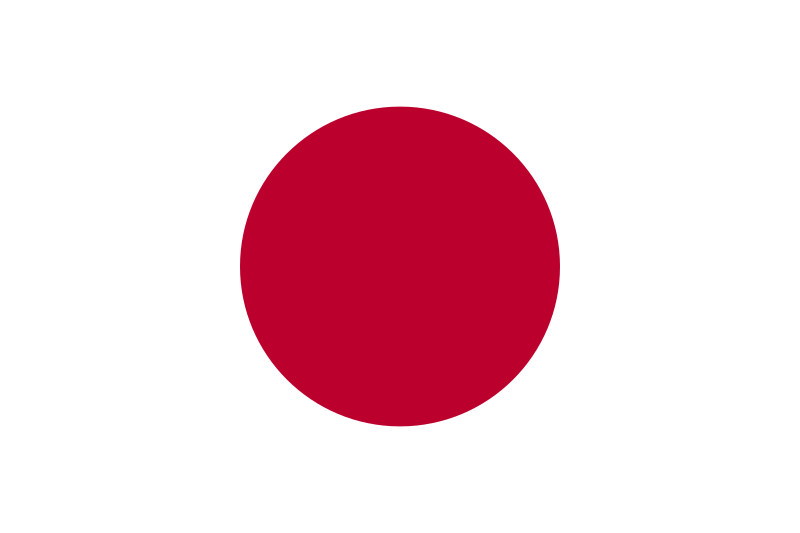
روسيا
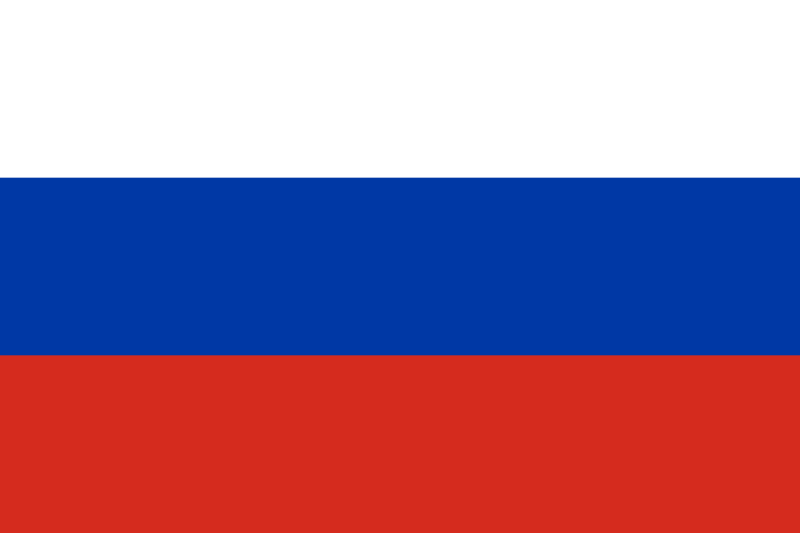
السويد

الولايات المتحده
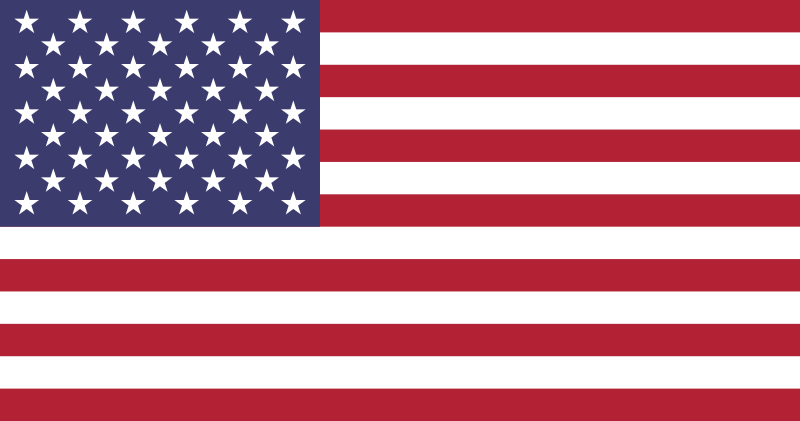
هذه الدول تصمم وتنتج مقاتلات خاصه بها إلا الهند فإنها لم تدخل سوق تصدير المقاتلات بعد
وهناك أربع دول تشترك معآ لتصنيع مقاتله
وهم
المملكه المتحده

ألمانيا

إيطاليا

أسبانيا

وتقوم هذه الدول بإنتاج المقاتله
Eurofighter Typhoon

وهناك بعض الدول التى تقوم بتصدير مقاتلات مستعمله مثل روسيا وأوكرانيا وبيلاروسيا
وبعض دول أوروبا التى تريد تجديد أسطولها من المقاتلات
الموردين الرئيسين
وتعتبر الولايات المتحده مع روسيا أكبر موردان للمقاتلات الحربيه
ذات السوق الكبير كما قلنا يبلغ حجم هذه السوق 33% من سوق السلاح العالمى
من 2005 إلى 2009
وتلقت الدولتان طلبيات كبيره وصغيره فى هذه الفتره الزمنيه
وبلغت صادارت الولايات المتحده من المقاتلات
331 مقاتله جديده وتشمل مقاتلات
f16
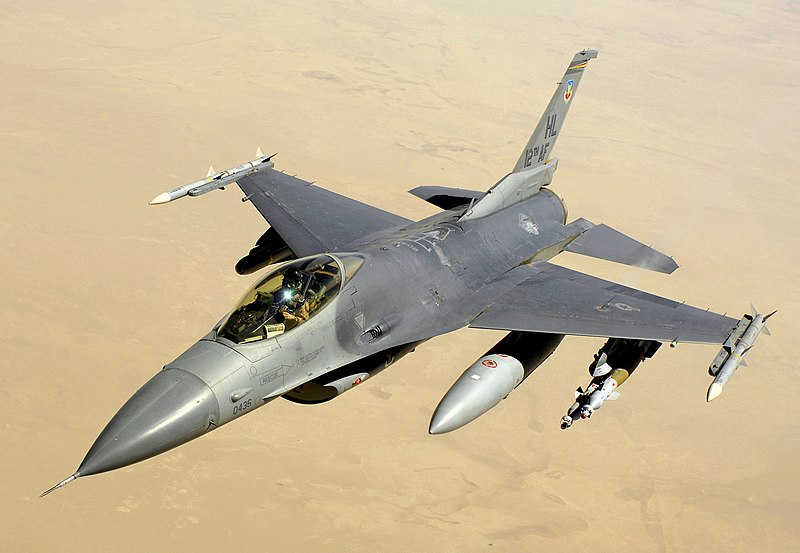
f15

f18

بمختلف طرازتها
وتنتج الولايات المتحده مقاتلات f22 ولكنها خاصه بالقوات الجويه الأمريكيه وغير قابله للتصدير
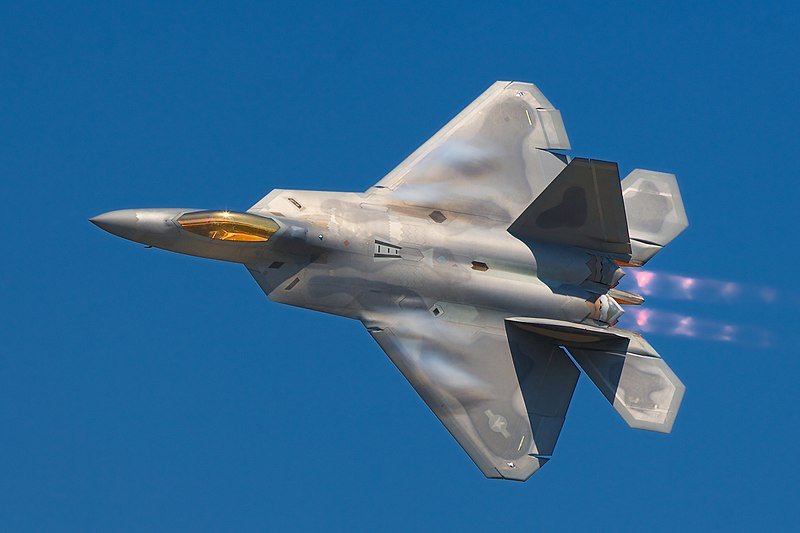
وقامت روسيا بتصدير 215 مقاتله وتشمل
su25

su27

su30

mig29

وتنتج روسيا مقاتلات خاصه بها
كاالمقاتله القاذفه su34
موردين ثانويين
وهناك موردين يستحوذون على نسبه أقل من هذه السوق
مثل
الصين
فرنسا
ألمانيا
السويد
المملكه المتحده
هذه هى البلدان التى تنتج وتصدر المقاتلات الحربيه
ويوجد فى القائمه أيضآ
إيطاليا
الهند
ونادرآ ما يتلاقيان طلبات للتصدير
جدول يوضح الدول المصدره للمقاتلات وحجم المبيعات

المقاتلات الحربيه هى السلعه المسيطره على سوق تصدير السلاح العالمى فقد إستأثرت بنسبة 27% من سوق تصدير السلاح الدولى
من عام 2005 إلى 2009
وإذا أضيف ما يتعلق بالمقاتلات من أسلحه ومحركات وقطع غيار ورادارت وإليكترونيات فتصل النسبه إلى 33%
وهذا ليس مستغربآ فالمقاتله الحربيه لازالت هى السلاح الأهم فهى تستطيع نقل كميه كبيره من السلاح إلى مديات بعيده
وتحقيق ضرر بالغ فى صفوف العدو
ولكنها تؤثر على ميزانيات الدول لتكلفتها العاليه
نسبة المقاتلات من سوق السلاح الدولى
| This image has been resized. Click this bar to view the full image. The original image is sized 916x442. |

الدول المنتجه والمصدره للمقاتلات
موردى المقاتلات الحربيه
11 دوله فقط هى المصنعه والمصدره للمقاتلات الحربيه
الصين
| This image has been resized. Click this bar to view the full image. The original image is sized 800x533. |

فرنسا
| This image has been resized. Click this bar to view the full image. The original image is sized 800x533. |

الهند
| This image has been resized. Click this bar to view the full image. The original image is sized 800x533. |

اليابان
| This image has been resized. Click this bar to view the full image. The original image is sized 800x533. |

روسيا
| This image has been resized. Click this bar to view the full image. The original image is sized 800x533. |

السويد
| This image has been resized. Click this bar to view the full image. The original image is sized 800x500. |

الولايات المتحده
| This image has been resized. Click this bar to view the full image. The original image is sized 800x421. |

هذه الدول تصمم وتنتج مقاتلات خاصه بها إلا الهند فإنها لم تدخل سوق تصدير المقاتلات بعد
وهناك أربع دول تشترك معآ لتصنيع مقاتله
وهم
المملكه المتحده
| This image has been resized. Click this bar to view the full image. The original image is sized 800x400. |

ألمانيا
| This image has been resized. Click this bar to view the full image. The original image is sized 800x480. |

إيطاليا
| This image has been resized. Click this bar to view the full image. The original image is sized 800x533. |

أسبانيا
| This image has been resized. Click this bar to view the full image. The original image is sized 750x500. |

وتقوم هذه الدول بإنتاج المقاتله
Eurofighter Typhoon
| This image has been resized. Click this bar to view the full image. The original image is sized 800x498. |

وهناك بعض الدول التى تقوم بتصدير مقاتلات مستعمله مثل روسيا وأوكرانيا وبيلاروسيا
وبعض دول أوروبا التى تريد تجديد أسطولها من المقاتلات
الموردين الرئيسين
وتعتبر الولايات المتحده مع روسيا أكبر موردان للمقاتلات الحربيه
ذات السوق الكبير كما قلنا يبلغ حجم هذه السوق 33% من سوق السلاح العالمى
من 2005 إلى 2009
وتلقت الدولتان طلبيات كبيره وصغيره فى هذه الفتره الزمنيه
وبلغت صادارت الولايات المتحده من المقاتلات
331 مقاتله جديده وتشمل مقاتلات
f16
| This image has been resized. Click this bar to view the full image. The original image is sized 800x553. |

f15
| This image has been resized. Click this bar to view the full image. The original image is sized 800x467. |

f18
| This image has been resized. Click this bar to view the full image. The original image is sized 800x533. |

بمختلف طرازتها
وتنتج الولايات المتحده مقاتلات f22 ولكنها خاصه بالقوات الجويه الأمريكيه وغير قابله للتصدير
| This image has been resized. Click this bar to view the full image. The original image is sized 800x533. |

وقامت روسيا بتصدير 215 مقاتله وتشمل
su25
su27
| This image has been resized. Click this bar to view the full image. The original image is sized 800x534. |

su30
| This image has been resized. Click this bar to view the full image. The original image is sized 800x530. |

mig29
| This image has been resized. Click this bar to view the full image. The original image is sized 800x588. |

وتنتج روسيا مقاتلات خاصه بها
كاالمقاتله القاذفه su34
موردين ثانويين
وهناك موردين يستحوذون على نسبه أقل من هذه السوق
مثل
الصين
فرنسا
ألمانيا
السويد
المملكه المتحده
هذه هى البلدان التى تنتج وتصدر المقاتلات الحربيه
ويوجد فى القائمه أيضآ
إيطاليا
الهند
ونادرآ ما يتلاقيان طلبات للتصدير
جدول يوضح الدول المصدره للمقاتلات وحجم المبيعات
| This image has been resized. Click this bar to view the full image. The original image is sized 872x589. |

نلاحظ فى هذا الجدول
وهو خاص بالدول المصدره للمقاتلات ويوضح انواع المقاتلات المصدره
أمام mig29
مكتوب
فى الواقع تحتوى على اجزاء وقطع من المقاتلات المخزنه لدى روسيا
ولم يتم إدراج f35 و pak fa للأن الأولى فى مرحلة التجارب النهائيه
والأخيره فى المرحله الأولى من التجارب
وهناك دول تنتج طرزات معينه مخصصه للتصدير فقط ولا تستخدم فى سلاحها الجوى
مثل الصين
التى صدرت نحو 41 مقاتله
f7
| This image has been resized. Click this bar to view the full image. The original image is sized 800x490. |

ومقاتلات لباكستان من طراز
jf17
| This image has been resized. Click this bar to view the full image. The original image is sized 800x450. |

وتنتج طائرات أكثر منها تطورآ للإستخدام الوطنى مثل
j10

jh7
| This image has been resized. Click this bar to view the full image. The original image is sized 800x600. |

وقد تلقت الصين طلبات تصدير من 50 إلى 150 مقاتله jf17 لباكستان ولا يوجد إحتمال وجود طلبات تصدير لهذه المقاتله قريبآ
وسوف تطرح j10 للتصدير بعد إكتفاء القوات الجويه الصينيه منها
جدول يوضح سوق تصدير المقاتلات
والمقاتلات المستعمله
| This image has been resized. Click this bar to view the full image. The original image is sized 865x514. |

نلاحظ فى هذا الجدول
أن
الصين
قامت بتصدير 117 مقاتله خلال التسعة سنوات الماضيه
فى حين ان
فرنسا
قامت بتصدير 97 مقاتله
ألمانيا
صدرت 15 مقاتله تايفون جديده للنمسا
إسرائيل
قامت بتصدير 23 مقاتله مستعمله
وهى الكفيير7 لدول أمريكا الجنوبيه
روسيا
صدرت 502 مقاتله جديده
و48 مقاتله مستعمله
تم توضيحهم فى الأعلى
السويد
صدرت 37 مقاتله جريبين
العميل الأساسى جنوب إفريقيا
و تؤجر مقاتلات للتشيك والمجر
واخر عميل تايلاندا
أوكرانيا
صدرت 98 مقاتله مستعمله
ومعظمها لدول فى أفريقيا
بريطانيا
صدرت 51 مقاتله جديده لا يوجد أى صادرات لمقاتلات مستعمله
الولايات المتحده
صدرت 546 مقاتله جديده
و81 مقاتله مستعمله
وهى الأكثر عددآ والأغلى سعرآ
| This image has been resized. Click this bar to view the full image. The original image is sized 700x255. |

وقد انتجت الدول المجتمعه فى تصنيع مقاتلة اليورفايتر 150 مقاتله من هذا النوع فى الفتره من 2005 إلى 2009
| This image has been resized. Click this bar to view the full image. The original image is sized 800x351. |

وإستلمت طلبات للتصدير تقدر ب24 مقاتله
15 مقاتله من ألمانيا قامت بتصديرها إلى النمسا
و9 مقاتلات من المملكه المتحده قامت بتصديرها إلى السعوديه
ولم تتلقا
ألمانيا
وإيطاليا
وأسبانيا
طلبات أخرى
فى حين تلقت المملكه المتحده طلب بتصدير 63 مقاتله اخرى إلى السعوديه
| This image has been resized. Click this bar to view the full image. The original image is sized 800x543. |

فرنسا
التى تتلقا طلبات لتصدير المقاتلات سنويآ منذ عام 1961
لم تتلقا طلبات منذ عام 2008
فرنسا التى لها صادارت ذات تاريخ عريق فى سوق المقاتلات لم تستطع تصدير سوى 17 مقاتله فقط فى الفتره من 2005 إلى 2009 من طراز ميراج 2000
| This image has been resized. Click this bar to view the full image. The original image is sized 800x510. |

فى حين أنتجت 65 مقاتله للإستخدام الوطنى من طراز
rafal

التى لم تتلقا أى طلبات للتصدير الخارجى بعد
السويد
قامت بإنتاج 60مقاتله من طراز جريبين
jas39

قامت بتصدير 37 مقاتله منهم
ومن المقرر أن تسلم من 25 إلى 31 مقاتله للعملاء خلال السنوات القادمه
أسبانيا
إيطاليا
الهند
لم تصدر مقاتلات فى هذه الفتره
فى حين ان اليابان التى لم تصدر مقاتلات
لديها سياسه تمنع تصدير الأسلحه عمومآ
Mitsubishi F-2
| This image has been resized. Click this bar to view the full image. The original image is sized 800x437. |

بالإضافه إلى المقاتلات الجديده هناك سوق أخرى للمقاتلات المستعمله
وأشهر الدول فى هذه السوق هى اوكرانيا التى تستأثر ب26% من هذه السوق
بسبب وجود عدد كبير من المقاتلات لديها من الحقبه السوفيتيه
ويأتى بعدها
الولايات المتحده
بلجيكا
هولندا
بمقاتلات f16 المستعمله
وتقوم الدول المنتجه بتطوير إنتاجها من المقاتلات وترويجها للعملاء
واحيانآ يقوم روساء الدول او روساء الوزراء بزيارة الدول التى تريد شراء المقاتلات
للترويج لمنتجاتهم الوطنيه ويقومون بعرض صفقات اوفست لتشجيع هذه الدول
فلا شك ان تعتبر الشركات المصدره للمقاتلات من اكبر شركات الأسلحه فى العالم
| This image has been resized. Click this bar to view the full image. The original image is sized 870x443. |

نلاحظ أهم ما فى هذا الجدول هو الدول المصدره للصواريخ التى تحملها المقاتلات
فرنسا
Matra Super 530
| This image has been resized. Click this bar to view the full image. The original image is sized 754x599. |

MICA (missile)
| This image has been resized. Click this bar to view the full image. The original image is sized 800x600. |

إسرائيل
Python (missile)
| This image has been resized. Click this bar to view the full image. The original image is sized 800x600. |

Derby
| This image has been resized. Click this bar to view the full image. The original image is sized 800x533. |

روسيا
مختلف انواع الصواريخ التى تحملها الطائرات
وأشهرها عائلة الأر
R-77 (missile)
| This image has been resized. Click this bar to view the full image. The original image is sized 789x599. |

أوكرانيا
عائلة الأر
R-73 (missile)
| This image has been resized. Click this bar to view the full image. The original image is sized 800x600. |

بريطانيا
صواريخ إسكاى فلاش وإسرام وأنواع أخرى
AIM-132 ASRAAM
| This image has been resized. Click this bar to view the full image. The original image is sized 613x599. |

Skyflash
| This image has been resized. Click this bar to view the full image. The original image is sized 800x588. |

الولايات المتحده
مختلف انواع الصواريخ التى تحملها المقاتلات وأشهرها
AIM-120 AMRAAM
| This image has been resized. Click this bar to view the full image. The original image is sized 750x600. |

وهذه هى
هى اكثر الدول المصدره للصواريخ الخاصه بالمقاتلات
و أوكرانيا هى التى عقدت اكثر عدد من الصفقات
فهى تنتج عائلة الأر
والصاروخ الأكثر تصديرآ لها هو r73
والصين
عقدت صفقات قليله اهمها
صواريخ sd10 إلى باكستان
| This image has been resized. Click this bar to view the full image. The original image is sized 800x543. |

وألمانيا
صواريخ
IRIS-T
إلى السعوديه واليونان
IRIS-T
| This image has been resized. Click this bar to view the full image. The original image is sized 800x600. |


أكثر الدول المستورده للمقاتلات
وفى عام 2007 2008
تواجد 3شركات من الشركات المنتجه للمقاتلات فى قائمة أكبر 100 شركه عالميه اتصدير السلاح
وبالنسبه لأكبر 10 دول مستورده للسلاح
تعتبر واردتها من المقاتلات هى الأعلى بالمقارنه مع الأسلحه الأخرى فى الفتره من 2005 إلى 2009
فى الفتره من 2005 إفى 2009 هناك 44 دوله قامت بإستيراد المقاتلات واكبر هذه الدول هى
الهند
| This image has been resized. Click this bar to view the full image. The original image is sized 800x533. |

الإمارات العربيه المتحده
| This image has been resized. Click this bar to view the full image. The original image is sized 800x400. |

إسرائيل
| This image has been resized. Click this bar to view the full image. The original image is sized 660x480. |

وهذه الدول تتواجد فى مناطق خطيره من حيث التواترت بين الدول المجاوره
وإستوردت هذه الدول ثلث عدد الطائرات المصدره فى الفتره من عام 2005 إلى 2009

| This image has been resized. Click this bar to view the full image. The original image is sized 710x581. |

نلاحظ فى هذا الجدول
الدول الأكثر شراء
الهند
إشترت 115 مقاتله جديده
الإمارات
إشترت 108 مقاتله جديده
إسرائيل
إشترت 82 مقاتله جديده
وهناك عدد من الدول العربيه قامت بشراء مقاتلات جديده ومستعمله
الجزائر
إشترت 32 مقاتله منهم 4 مقاتلات مستعمله
الإردن
إشترى 36 مقاتله مستعمله
سوريا
إشترت 33 مقاتله مستعمله
اليمن
إشترى 33 مقاتله مستعمله و4 مقاتلات جديده
أثر المقاتلات عل حالة الإستقرار العالمى
المقاتلات من اكثر الأسلحه القادره على توجيه ضربات مؤلمه
وهى سلاح مهم يقوم بضربات فى اماكن بعيده وبسرعه رهيبه
فى الدول المجاوره مثل
الهجوم الإسرائيلى على سوريا فى عام 2007

والهجوم الروسى على جورجيا فى 2008


| This image has been resized. Click this bar to view the full image. The original image is sized 635x326. |
وزادت قدرات المقاتلات بشكل ملحوظ عندما تم دعمها بطائرات الأواكس
وزيادة قدراتها فى الحرب الإلكترونيه
| This image has been resized. Click this bar to view the full image. The original image is sized 650x487. |

| This image has been resized. Click this bar to view the full image. The original image is sized 640x383. |

| This image has been resized. Click this bar to view the full image. The original image is sized 1000x680. |

| This image has been resized. Click this bar to view the full image. The original image is sized 3072x2304. |

وأيضآ قدرتها على حمل أسلحه قصيرة المدى وبعيدة المدى تتيح لها توجيه ضربات شديدة الدقه
Taurus
| This image has been resized. Click this bar to view the full image. The original image is sized 800x600. |

AGM-65 Maverick
| This image has been resized. Click this bar to view the full image. The original image is sized 750x492. |

Storm Shadow
| This image has been resized. Click this bar to view the full image. The original image is sized 800x318. |

وبتلك المواصفات تستطيع المقاتلات زعزعة الإستقرار
وقد ادرجت المقاتلات فى معاهدة الحد من الأسلحه التقليديه فى اوروبا عام 1990
التى تفرض قيود على إمتلاك المقاتلات وكذلك
العربات المدرعه والمدفعيه والهليكوبتر الهجوميه والدبابات
ومن المتوقع ان تقوم كل الدول التابعه للأمم المتحده بتقديم تقارير إلى سجل الامم المتحده بالواردات والصادارات من المقاتلات
من خلال معاهدة UNROCA)
التى تم عقدها لمنع تراكم مخزون الأسلحه لدى الدول
وتشمل سبعة فئات من الأسلحه التى تزعزع الإستقرار
العربات المدرعه والمدفعيه والهليكوبتر الهجوميه والدبابات والمقاتلات والسفن الحربيه والصواريخ وقواذف الصواريخ
سبعه من الثمانى دول المالكه للأسلحه النوويه تستخدم المقاتلات فى حمل تلك الأسلحه
المملكه المتحده هى الدوله النوويه الوحيده التى لا تستخدم المقاتلات فى حمل تلك الأسلحه
الهند وإسرائيل يعتقد إنهم يستخدمون المقاتلات فى حمل تلك الأسلحه
بجانب إنهم من أكثر الدول إستيردآ للمقاتلات
وتستخدم المقاتلات المستورده فى ذلك


مع ذلك تم عقد إتفاقية الحد من تصدير الصواريخ الباليستيه وصواريخ كروز للحد من إستخدام تلك الأسلحه فى حمل الأسلحه النوويه
الأثار الإقتصاديه
المقاتلات هى من أكثر القطع العسكريه تكلفه فقد تكلف المقاتله الواحده 40 مليون دولار واكثر من ذلك فى معظم الأحيان
فى الواقع 40 مليون دولار
يمكن بهم شراء
مقاتله من طراز j10 الصينيه بتسليحها
فى حين إن
المقاتله mig29 بيعت لبورما بمبلغ 30 مليون دولار تقريبآ بدون التسليح
وتقترب من 40 مليون دولار كاملة التسليح
وأقل مقاتله فى السعر موجوده حاليآ
هى jf17
الصينيه الباكستانيه يتراواح سعرها بين 15 إلى 20 مليون دولار
ثم تأتى التيجاس الهنديه
ذات تكلفة 20 مليون دولار
السوخوى30 بيعت للجزائر بمبلغ 60 مليون دولار
f16 block52 الجديده التى تعاقدت عليها مصر يقترب سعرها من ال70 مليون دولار
المقاتله اليابانيه f2 تكلفتها 80 مليون دولار
f18 بيعت للقوات الجويه الأمريكيه بمبلغ 80 مليون دولار
f15 بيعت لكوريا الجنوبيه بمبلغ 105 مليون دولار
السعوديه تعاقدت على التايفون بمبلغ 120 مليون دولار
f16 block60 الإماراتيه بمبلغ 80 مليون دولار
السوخوى 35 تعاقدت عليها ليبيا بمبلغ يقترب من 70 مليون دولار
وستباع للجيش الروسى بمبلغ 40 مليون دولار
الجريبين بيعت لجنوب إفريقيا وتايلاند بمبلغ 52.5 مليون دولار
f35 تعاقدت عليها إسرائيل بمبلغ 96 مليون دولار
فى حين إنها تعرض على كندا والسوق العالميه بمبلغ يبدء من 130 مليون دولار
الباك فا التى تعاقدت عليها الهند مع روسيا تكلفة المقاتله الواحده 100 مليون دولار
فى حين إن أغلى مقاتله هى f22 التى يقدر ثمنها ب285 مليون دولار
الرافال الفرنسيه
لم يتعاقد عليها احد بعد
فى حين إن الطراز الحالى بيع للقوات الجويه الفرنسيه بمبلغ يتراوح ما بين 60 إلى 70 مليون دولار
وهناك من يقول إنها تعرض بطرازها المحدث على الإمارات بمبلغ 130 مليون دولار
المقاتله جيده لكنى أرى إن سعرها هكذا إن صحت الأقوال مبالغ فيه جدآ
فالأفضل للإمارات أن تنتظر الباك فا بعد 2016
وفى الواقع المقاتله الواحده قد تباع لدوله بثمن و تباع لدوله أخرى بثمن أخر
وهذا يكون بالسبب التجهيزات الخاصه بالمقاتله
فهذا بلد يطلب مواصفات وهذا بلد اخر يطلب مواصفات اخرى
هناك بلدان ليست لديها ميزانيات كبيره تشترى المقاتلات على دفعات تقدر بأربعة مقاتلات
كإندونيسيا وتايلاند
ولا تطلب معها كميات سلاح كبيره ولا قطع غيار
فى حين ان هناك بلدان اخرى كالسعوديه والإمارات
تشترى صفقات كبيره من 60 إلى 72 مقاتله
وتشمل الصفقه كميه كبيره من الأسلحه وقطع الغيار ومصاريف صيانه ودعم فنى وتدريب
وتأهيل قواعد فيكون سعر الصفقه كبير
وبرامج إقتناء المقاتلات
هى أكثر برامج الأسلحه تكلفه للدول التى تعد هذه البرامج
ومما يزيد تكلفة المقاتلات
هى البرامج التدريبيه والدعم الفنى وقطع الغيار والصيانه والبنيه التحتيه الخاصه بالمقاتلات
التى قد يوقع عليه مع صفقة المقاتلات أو تكون منفصله
بالإضافه إلى مصاريف التشغيل المرتفعه
وبرامج الترقيه على سبيل المثال برامج ترقية نصف العمر
العديد من المقاتلات تخضع لهذه الترقيه لتمديد عمرها من 15 إلى 20 عام
بسبب إرتفاع تكاليف المقاتلات يمكن لها أن تثقل ميزانيات الدول ومنها الدول الغنيه أيضآ
وإقتناء المقاتلات يحدد السياسه الدفاعيه للدوله لفترات بعيده
فالمقاتلات ليست أسلحه تدخل الإستخدام وتخرج بعد سنوات قليله إنما تستمر فترات بعيده نسبيآ
| This image has been resized. Click this bar to view the full image. The original image is sized 952x600. |

هذا الجدول يوضح تكلفة بعض صفقات المقاتلات وإختلافها من دوله إلى أخرى
نجد إن المغرب تعاقد على 24 مقاتله f16 بمبلغ 2.4 مليار دولار
وتركيا تعاقدت على 30 مقاتله من نفس النوع بمبلغ 1.8 مليار دولار
أى عدد مقاتلات اكثر وبسعر أقل
هذا يرجع إلى ان المغرب
ليس لديه بنيه تحتيه مجهزه لهذه المقاتلات فالصفقه تشمل بناء قاعده لهذه المقاتلات
فى حين ان تركيا تشغل ثالث أكبر أسطول من الأف16 بعد امريكا وإسرائيل وتقوم بتجميع المقاتلات محليآ
فلا تحتاج إلى بنيه تحتيه
وتوفر اموال بسبب التجميع محليآ ومسائل الصيانه والدعم الفنى وهكذا تسير الأمور
| This image has been resized. Click this bar to view the full image. The original image is sized 877x469. |

هذا الجدول يوضح صفقات تحديث المقاتلات
ونجد فيه التالى
إسرائيل
تحدث مقاتلات كفيير لكلومبيا فى صفقه ب160 مليون دولار
الهند
عقدت صفقتين مع فرنسا لتحديث الميراج
ومع روسيا لتحديث الميج29
باكستان
عقدت صفقه مع امريكا تقترب من ال900 مليون دولار لتحديث 32 مقاتله أف16 للبلوك 50
البيرو
صفقه مع روسيا لتحديث 8 مقاتلات ميج29
السعوديه
عقدت صفقه مع بريطانيا لتحديث 82 مقاتله تورنيدو إلى الطراز gr-4s f بمبلغ مليار دولار
وعقدت صفقه مع أمريكا لشراء محركات جديده ل70 مقاتله f15 s
تركيا
عقدت صفقه مع الولايات المتحده لتحديث 80 مقاتله f16 بتكلفة مليار ومائة مليون دولار
قاعدة بيانات المعهد لتجارة الأسلحه
جميع هذه البيانات مأخوذه من قاعدة بيانات معهد إستكهولم لتجارة السلاح والمعهد يمتلك قاعدة بيانات لجميع صفقات السلاح منذ عام 1950 إلى عام 2009
وتستند بيانات المعهد على التسليم الفعلى لصفقات السلاح
والأسلحه التقليديه التى يراقبها المعهد عباره عن
المدرعات والطائرات والسفن التى يصل حجمها أكثر من 100 طن
والأسلحه الموجهه وأجهزة الرادار وأجهزة الإستشعار عن بعد
والمدفعيه ذات عيار أكثر من 100ملم
وصواريخ ومدفعية الدفاع الجوى والمحركات
ويتم جمع بيانات المعهد من المصادر المعتمده لصفقات تصدير السلاح ومن الصحف والدوريات الخاصه بالسلاح
والكتب المرجعيه السنويه والدراسات الدوليه والوثائق الوطنيه
ومعلومات التصنيع ومواقع الإنترنت
وموقع قاعدة البيانات الخاصه بالمعهد متاح للجمهور
http://www.sipri.org/
ويوجد معلومات عن أكبر 100 شركه فى صناعة السلاح
بإستثناء الصين
واحدث قائمه لعام 2008 متاحه للجمهور
http://www.sipri.org/research/armame...uction/Top100
